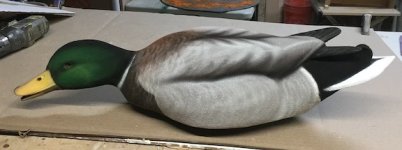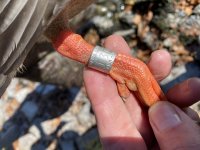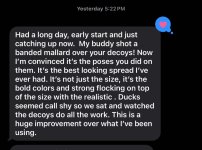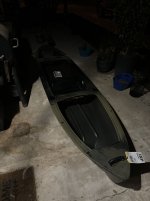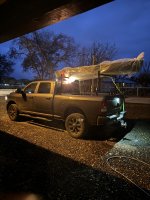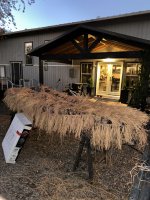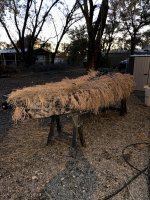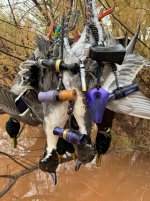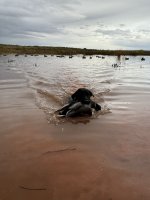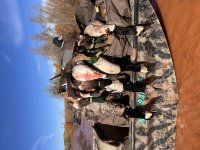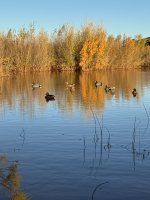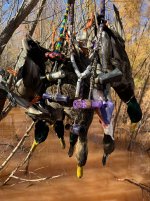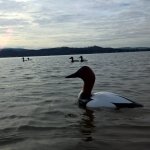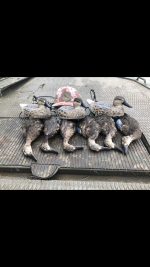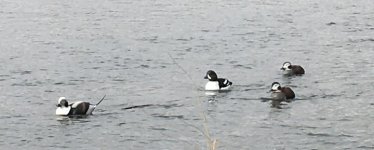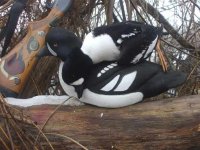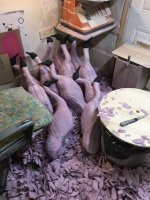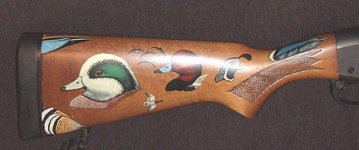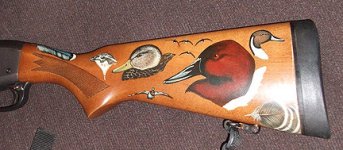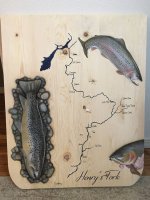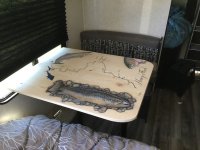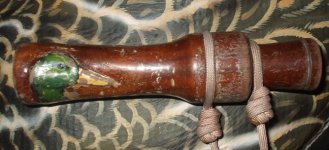William gave a good description of how we do it. He's working with molded foamers, I'm working with carved and burlapped foamers. Molded foamers have somewhat of a shell, carved foamers do not, thus the addition of the burlap layers.
While transitions in color is primarily a product of airbrushing, there are parts of the flocking process that makes it work even better.
For the most part I flock the first coat on every decoy with goose grey flocking over smoke grey rustoleum. The reason we use gloss rustoleum is that it stays wet longer and makes it easier to get good adhesion. I've used water based flocking glue and solvent based flocking glue and none of them came close to rustoleum.
After I've done the first coat of flocking I'll go back with the second coat in sections of color like on this shoveler, then go on to airbrush with thinned rustoleum mixed colors.
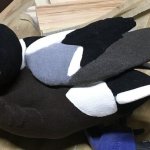
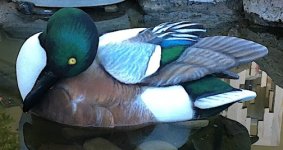
On occasion when you are using the same color of flocking like goose grey flocking on this wigeon I can use rustoleum gloss brown on the body and smoke grey on the head and flock it all at the same time giving the transition between head and body a seamless look.
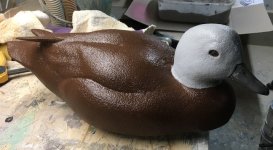
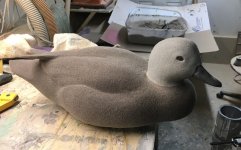
I left these wood ducks out on my water feature since March, they've been frozen, snowed and rained on, and sun and heat up to 110 last summer. Sun is hard on paint, but these still look great. The flank of the wood duck was done with oil based paint pens and that held up as well.
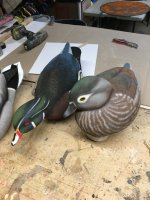
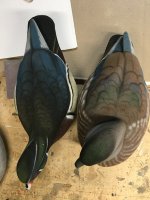
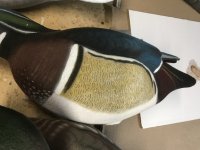
I flock and paint all of my decoys, not just because they are more effective, but the painted surface is stronger than just paint. This is not the same process that factories flock with.
This mallard was flocked grey body twice, head and rump black on a second coat and brown on the small patch of chest. All the transitions of color are airbrushed with rustoleum.
